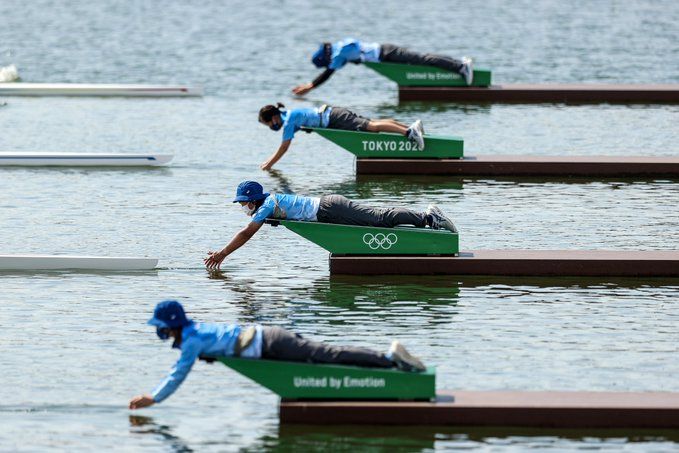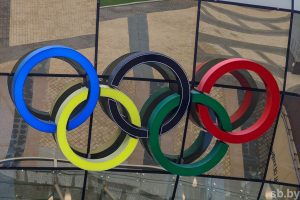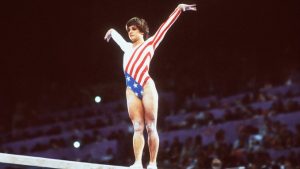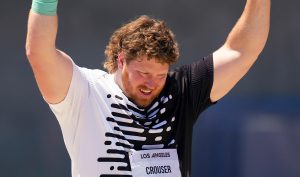The rowing competitions at the 2020 Summer Olympics in Tokyo will take place between 23 and 30 July 2021 at Sea Forest Waterway on Tokyo Bay. A crew from 80 nations will compete in the Olympic rowing regatta. For the first time, fourteen medal events will be contested by 536 athletes.
For the first time in Olympic history, there are even numbers events for both men and women, seven each. While some athletes will race with two oars, some will race with one, some will row alone in a boat and some will row in a boat with right others. Here’s everything you should know about from bow to stern, while you watch rowing a the Olympics.
Rowing directions and length of the course
Rowing is unique among other sports because the rowers face the start line throughout the race and never see the finish line until they cross it. Rowing involves propelling a boat using oars along a 2,000m straight-line course. The boat is also known as the shell, that moves in the opposite direction the rowers are facing.
The end of the boat closest to the start line is called the ‘stern’ and the opposite end pointing toward the finish line is called the ‘bow’ and the rower sitting closest to the bow of the boat is called the “bow seat.” the seats in the boat are numbered from bow to stern, the bow seat also being called the “1 seat”.
Also Read | Tennis star Naomi Osaka lights Tokyo Olympics cauldron as Games kick off
In rowing, ‘left’ and ‘right’ are referred to as ‘port’ and ‘starboard’, but the key here is perspective. “Port” is the left side of the boat from the rower’s perspective facing the stern. “Starboard” is the right side of the boat from the rower’s perspective. Women’s events were introduced at the 1976 Olympic Games in Montreal. A maximum of six boats can compete in each heat and every 500-meter section of water is marked by a large buoy.
Seven boats at the Olympics
There are seven events for both men and women rowers at the Olympics. First, there are the sweep boats, the coxless pair, the coxless four, and the coxed eight. Sweep rowers each with one oar usually have a wooden handle. Players sit in a configuration where the oars alternate on either port or starboard side.
A boat is “coxed” when it has a coxswain, the person responsible for steering the boat, coaching, and motivating the rowers in water. The coxswain typically sits facing the stroke seat at the stern of the eight. The eight is the only coxed boat at the Olympics. Rowing is broadly classified into sculling and sweep events.
Sweep events are designated by the number of rowers in the boat and either a “+” or a “-,“ which indicates that it is coxed or coxless. The coxless pair is designated as “2-,“ the coxless four as “4-,” and the coxed eight as “8+.” All designations are preceded by “M” or “W” to indicate “men’s” or “women’s.”
Also Read | Understanding the intricacies of Olympic Torch: Design and engineering
Sculling involves holding one oar in each hand and there are many sculls, the single sculls, the double sculls, the lightweight double sculls, and the quadruple sculls. Scullers stroke with two oars while in sweep events a single oar is held with both hands. Sculls don’t include a coxswain, so a rower is responsible for steering the boat with rudder cable attached to their foot.
The symbol ‘x’ indicates the rowers are sculling in the event and the single is designated as “1x”, the doubles as “2x” and the quad as “4x”. There is one lightweight event for men and women. The lightweight category for men requires crews to have an average weight of 70 kg or lighter and for female crews, the maximum weight is 57 kg.
The race strategy
While watching the race, one might see a graphic periodically pop up on the broadcast with the “stroke rate” of the crews on the water. The coxswain can see their stroke rate from an electronic device that is in the shell called a “cox box”. Stroke rate is the number of strokes per minute the rowers in the boat are collectively taking.
Also Read | Meet Miraitowa and Someity, mascots of Tokyo Olympics and Paralympics
The power of the stroke is generated by the driving motion of the legs. Typically, a crew’s stroke rate will be high at the start, then it will settle into a more sustainable stroke rate. During the meat of the race, boast may opt to take a “power 10” in which the rowers give their best, hardest 10 strokes to pass other crews.
Boats will start their final sprint to the finish line depending on how the race is going. In that stretch of typically 200 meters, a crew can go back up into its starting stroke rate range. After the bow of each boat crosses the finish line and the race ends, the crews will row for five to 10 minutes to cool down.







